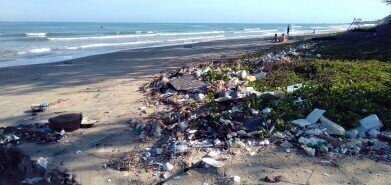Water/Wastewater
What Are the Most Polluted Seas?
Aug 28 2021
The state of oceanic pollution is no laughing matter. There are an estimated 5.25 trillion pieces of plastic waste in our seas and oceans, which are responsible for killing some 100 million marine animals on an annual basis. Unless we follow the lead of climate scientists and change our wasteful ways, the situation is only going to get worse in the coming years, as well. To give an idea of the scale of the problem, here is a rundown of five of the most polluted seas found on the planet.
-
Mediterranean Sea
Although the Mediterranean Sea carries connotations of luxurious holidays and pristine beaches, it’s actually plagued by pollution. According to estimates provided by the United Nations, the Mediterranean receives 650 million tonnes of sewage, alongside 129,000 tonnes of oil, 60,000 tonnes of mercury, 3,800 tonnes of lead and 36,000 tonnes of phosphate – every single year! No wonder it’s in such bad shape.
-
Baltic Sea
After the dissolution of the Soviet Union, Russia later admitted to disposing of much nuclear waste – including nuclear reactors from its submarine fleet – into the Baltic Sea. On top of that radioactive waste, the Baltic Sea also suffers from widespread industrial pollution. Eutrophication in the area has led to massive outbreaks of blue-green algae. In 2010, for example, a patch of this parasitic vegetation stretched almost 377,000km2, which is the whole of the Sea and an area bigger than Germany.
-
Sea of Azov
This sea bordering Russia and Ukraine is the shallowest in the world, with a maximum depth of just 14m! Nonetheless, it’s an important trading route for cargo vessels and tankers, but due to its shallowness, these ships can often run aground and pollute the waters. Industrial waste is another major issue, with the level of carcinogens which are allowed to leach into it responsible for killing a quarter of the invertebrates which call it home.
-
Gulf of Mexico
Almost entirely enclosed on all sides by the USA, Mexico and Cuba, the Gulf of Mexico is known as the one of the largest sections of dead marine water anywhere on the planet. Intensive agricultural practices in the three countries (especially in the States) have poisoned the water with excessive levels of nitrogen and phosphorous, depleting its supply of oxygen and making it uninhabitable for marine life. What’s more, it often suffers major oil spillages, such as the catastrophic Deep Horizon event in 2010.
-
Caribbean Sea
Like the Med, the Caribbean is also regarded as a paradisical part of the world, but unsustainable levels of tourism (and the environmentally damaging behaviours which accompany them) are edging it towards mass pollution. For example, plastic pollution is a rampant problem; as many as 200,000 pieces of waste were found per square kilometre in a recent study. Breakthrough technologies such as the union of forensic science and artificial intelligence are being trialled to tackle the issue, but if it is not addressed at source, it is only going to deteriorate in the years ahead.
Events
WEATHER • CLIMATE • WATER / EARTH OBSERVATIONS / GREEN ECONOMY
Oct 29 2024 St. Petersburg, Russia
Oct 30 2024 Hong Kong
Nov 05 2024 Toronto, Canada
Nov 06 2024 Ho Chi Minh City, Vietnam
Nov 12 2024 Valencia, Spain




..jpg)








